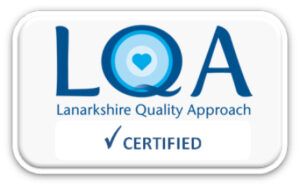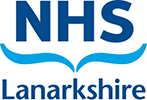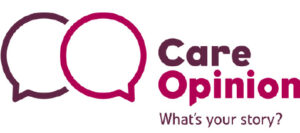Adoption Preparation Group Information Booklet
Information for patients
NHS Lanarkshire Neonatal Department
PIL.ADOPTP.20_19970.L
Introduction
This booklet aims to give potential adoptive parents more information on health’s involvement in the adoption process. We have given on overview on the process involved in the adult and child medical assessments. We have also given information on potential matching considerations and health issues. Our aim is not to give exhaustive information but to act as a starting point in which potential adoptive parents can then go on to do some further reading.
Adult Medical Process
Why is this necessary?
As part of the adoption process, potential adopters are required to have a comprehensive health assessment. This is because we have a duty of care to the child to ensure that prospective adopters are suitable to meet the child’s physical, emotional and developmental needs. It is also to protect the adult as adopting a child brings additional demands on your physical and emotional health. In addition, children under the age of 5 years will not be placed in a household where there are smokers.
What is involved?
Adult medicals are undertaken by GPs who fill in a standardised BAAF form (Adult Health). Sections of the form are filled in by the applicant, GP and medical advisor. The completed form is then returned to the allocated social worker and the medical advisor’s comments are discussed at panel.
Data collected on the applicant includes:
- Medical history:
-
- Physical health
- Mental health
- Obstetric/fertility history
- Prescription medication
-
- Lifestyle:
-
- Smoking
- Alcohol
- Recreational drugs
- Exercise
- Diet
-
- Family history
- GP assessment:
-
- Review of medical history
- Physical examination
- Blood pressure
- Body Mass Index
- Urine and blood tests, if indicated
- Cardiovascular risk factor score (indicates risk of heart disease, stroke and diabetes in next 10 years)
-
- Issues:
-
- Applicants need to be aware that health issues will be discussed at panel and their co-applicant will be there.
- Applicants must be honest and present an accurate reflection of their health. Dishonesty potentially places the child and applicant at risk.
- Having a raised BMI can have significant impact on the adopter’s health and potentially their ability to care for a child. If your BMI is out with the normal range, this will be discussed with you by your social worker. We advise that you make adjustments to your lifestyle to address this prior to attending panel.
-
Child Medical Process
Why is this necessary?
When children go into care and a decision is made for permanency, a detailed assessment of the child’s health is requested. This will provide the panel, social workers and adoptive parents with a summary of the child’s physical, developmental and mental health. If any additional health needs are identified, a plan will be formulated which may include investigation and onward referral. The information from this assessment will inform future matching considerations.
What is involved?
- Medical history
- Family history
- Physical examination
- Developmental assessment
- Immunisations
- Hearing screen
- Review of Guthrie test results (newborn screening)
- Additional assessments
- Referrals as indicated
Under care planning requirements for looked-after children, reviews are required every 6 months if aged under 5 years and every year if over 5 years.
There can often be missing information especially around maternal drug and alcohol use in pregnancy, family history and health information prior to being accommodated.
Role of the Medical Advisor
Adult medicals are reviewed by a General Practitioner who submits a summary report to the adoption panel. The panel medical advisor is a Consultant Paediatrician. They receive copies of all the health paperwork and provide a summary of the health of adopters and children to the panel. The medical advisor raises any problems that have been identified and may ask further questions at panel. The potential adoptive parent should let social work know if there is anything they do not want discussed openly. The panel medical advisor is happy to answer any questions before, during or after a panel.
Matching considerations
There are certain potential health issues that adoptive parents should be aware of. This booklet aims to give more information and act as a starting point for applicants to do some further reading.
Foetal Alcohol Spectrum Disorder (FASD)
What is Foetal Alcohol Spectrum Disorder?
FASD is a condition that may be diagnosed in an individual who was exposed to alcohol before they were born (in utero).
When a pregnant woman drinks alcohol, the alcohol passes freely through the placenta to the developing baby.
What effect does alcohol have during pregnancy?
Drinking alcohol at any stage in pregnancy can cause harm to the developing foetus. There is no amount of alcohol which it thought to be safe in pregnancy and in general, the greater the consumption of alcohol the greater the risk of developing FASD.
The first twelve weeks of pregnancy are the most vulnerable time for harm in the development of the foetus as this is when the majority of structural development takes place. Alcohol consumption during this time may lead to structural defects such as distinctive facial features, deformities of joints, limbs and fingers and heart defects or problems with the kidneys and bones. The remainder of the pregnancy focuses on growth and drinking alcohol in later pregnancy can growth problems and difficulties in their general development.
How is Foetal Alcohol Spectrum Disorder diagnosed?
FASD is diagnosed when the foetus has been exposed to alcohol during any stage of pregnancy and the child has characteristic facial features as well as evidence of impaired neurodevelopment. There is a specific scoring criteria to reach a diagnosis which includes psychometric testing. In general a diagnosis will not be made until the child is at school and these assessments can be performed.
Not all children with FASD will have the characteristic facial features and facial features may be less obvious in the preschool child.
How does Foetal Alcohol Spectrum Disorder affect the child?
Some of the difficulties the child may have are:
- Difficulties with feeding, sleeping and irritability (babies may need to be fed often and can be demanding).
- Babies may be small and light with a smaller than normal head. Their growth does not catch up with other children.
- At the nursery stage, poor coordination and poor attention may be evident.
- Severe learning difficulties, difficulty processing their thinking and learning, memory impairment, speech and language difficulties, hyperactivity, poor concentration and an inability to understand the consequences of their actions.
- They are more prone to infections especially chest and ears.
What support is available for children with Foetal Alcohol Spectrum Disorder?
A timely diagnosis, access to appropriate services and support can help children with FASD to reach their full potential.
FASD Scotland
https://www.adoptionuk.org/pages/site/scotland/category/fasd-hub-scotland
FASD Scotland offers information and awareness of the lifelong risks of prenatal alcohol exposure as well as advocacy and support to families caring for children with FASD.
National Organisation for Foetal Alcohol Syndrome UK
https://nationalfasd.org.uk/
The NOFAS-UK helpline responds to enquiries from parents, family members, carers and others needing advice or referrals for children with FASD. NOFAS-UK organises events focused on wellbeing for families and carers of children with FASD and provides resources that support those with FASD at home and at school.
Effects of Drugs in Pregnancy
It is difficult to say what harm is caused by a specific drug or drugs since pregnant women who misuse drugs are likely to have other factors in their lifestyle which could have an impact on the foetus.
General risks of drug misuse are:
- Failure of baby to grow in the womb
- Low birth weight
- Small head
- Premature birth
- Increased risk of death of baby in neonatal period
- Neonatal abstinence syndrome
- Developmental delay
- Behavioural problems
Neonatal Abstinence Syndrome (NAS)
What is NAS?
NAS is a constellation of symptoms that occurs in a baby as a result of withdrawing from physically addictive substances taken by the mother during pregnancy. These substances include (but not exclusively) methadone and other opioids, heroin, benzodiazepines, cocaine and amphetamines as well as caffeine, nicotine and some antidepressant drugs.
How is NAS diagnosed?
Symptoms of NAS can be delayed; therefore babies at risk of developing NAS are not normally discharged home before the 5th day. The severity of symptoms can vary and can last for one week to three months. At risk babies are monitored for symptoms including:
- Exaggerated jerky movements
- Exaggerated startle reflex
- Shrill cry
- Irritability
- Increased muscle tone
- Tremors
- Weak suck and difficulty feeding
- Breathing difficulties and fast breathing
- Abnormal sleep patterns
- Seizures
- Fever
- Vomiting
- Diarrhoea
- Sneezing
NAS is likely in a baby who has the signs and symptoms listed above and whose mother was known to take addictive substances during pregnancy. Each baby will be assessed and other causes considered.
How is NAS treated?
The aim of treatment is to control symptoms to allow oral feeding, tolerable irritability and adequate weight gain. Simple measures to control symptoms of NAS include swaddling, use of dummies and prolonged nursing.
The severity of withdrawal can be assessed using the Liptiz Score. There are specific criteria which must be met for treatment with oramorph to be given. This is then weaned over a number of days. Babies will not be discharged home on oramorph, however other medications are available if a more prolonged weaning period is needed.
What are the risks of NAS?
Babies with NAS are at risk of:
- Being small; growth may catch up but the head may remain small
- Sudden Infant Death Syndrome
- Changes in the visual response to light, resulting in delayed smiling, fixing and following
- Learning difficulties
- Developmental delay
- Behavioural problems
Blood-Borne Viruses
We recommend that all children who are at risk of blood-borne viruses should be tested. Specific parental consent is required for this as diagnosing an affected child means that the parent is also diagnosed. This can also have implications for other family members. Children with a blood borne virus may not develop symptoms until they are adults and even if there is a delay in diagnosis, treatment can still be effective.
Transmission of Blood Borne Viruses
Blood borne viruses can be transmitted in the following ways:
- From mother to child at birth
- Unprotected sex/sexual abuse
- Sharing needles and other misuse of drug equipment
- Needle stick injury
- Tattooing/piercing with non-sterile equipment
- Sharing razors/toothbrushes
A person does not pick up the infection by the following contacts (unless the infected person is highly infectious):
- Social contact – kissing/holding hands
- Coughing/sneezing
- Sharing bathrooms/toilets/swimming pools
- Sharing food/cutlery/dishes
- Bodily fluids: urine, faeces, saliva, sputum, tears, sweat, vomit (unless contaminated with blood)
Breastfeeding does not pass on the infection.
Screening during pregnancy
Because of the risk to newborn babies, since 1998 there has been a screening programme for pregnant women in the UK. When a mum to be has her first visit with the midwife (booking), blood is routinely tested, with consent, for syphilis, hepatitis B and HIV. Hepatitis C is not routinely tested unless risk factors are present.
Mum could become infected between her booking blood test and the baby being born if she engages in high risk behaviours.
Hepatitis B
What is Hepatitis B?
Hepatitis B is an infection of the liver spread by blood-to-blood contact. The inflamed liver may become scarred (cirrhosis), which can lead to cancer of the liver.
How can the risk of transmission to a baby be reduced?
Babies at high risk of developing hepatitis B from infected mothers are given doses of the hepatitis B vaccine from birth. A blood test for Hepatitis B and to check an adequate response to the vaccination
is taken at 14-18 months.
In 2017, the UK introduced the 6-in-1 vaccine for all babies, which protects against hepatitis B and 5 other diseases. This is given along with other routine immunisations at 2, 3 and 4 months of age.
Babies of mothers who are identified on blood test as being particularly infectious might also be given a dose of hepatitis B immunoglobulin at birth on top of hepatitis B vaccination to give them rapid protection against infection.
Long-term foster carers (and their families) who accept emergency referrals should be offered hepatitis B immunisation.
What is the treatment and long-term outlook in those with Hepatitis B?
Most people infected with hepatitis B in adulthood are able to fight of the virus and fully recover in 1-3 months. Children and babies with hepatitis B are more likely to develop chronic infection.
Chronic infection affects around:
- 90% of babies with hepatitis B
- 20% of older children with hepatitis B
- 5% of adults with hepatitis B
Although treatment can help, there’s a risk that people with chronic hepatitis B could eventually develop liver cirrhosis or cancer.
Hepatitis C
What is Hepatitis C?
Hepatitis C is also an infection of the liver.
The acute infection is usually mild and many people are unaware of their condition. Around 20% of infected people clear the virus spontaneously without treatment. The remaining chronically infected people are at risk of cirrhosis and liver cancer.
Screening in pregnancy for hepatitis C is only done is there is a known high risk (IV drug misuse/infected partner). Treatment of hepatitis C is not recommended in pregnancy and infection cannot be prevented from being passed on to the baby.
What is the treatment and long-term outlook in those with Hepatitis C?
Baby should have a blood test to detect the hepatitis C virus at around 12-18 months of age.
Children found to be hepatitis C positive will be monitored to identify the minority who are at risk of progressive fibrosis in childhood, and who may be candidates for treatment.
Children infected with hepatitis C with evidence of liver disease will be considered for treatment with interferon and ribavirin.
50% of children infected with hepatitis C genotype 1 are cured after one year of treatment. For types 2 and 3, 80% are cured after 6 weeks of treatment with interferon and ribavirin. About 10% of the chronic cases will die as a result of the infection.
HIV
What is HIV?
HIV (human immune deficiency virus) is a virus that attacks cells that help the body fight infection, making a person more vulnerable to infections and diseases.
HIV can be transmitted from mother to child during pregnancy and delivery.
With appropriate anti-retroviral treatment of mother during pregnancy and labour and avoidance of breast feeding, the risk of transmission of HIV from mother to baby is reduced from 40% to <0.1%.
How do you test for HIV in the baby?
If mum is HIV positive, baseline bloods are taken from the baby soon after birth. Repeat blood testing will be carried out during follow up depending on the baby’s level of risk.
How is HIV treated in the baby?
Each baby will be assessed and depending on their level of risk of HIV infection, a treatment regime is commenced. Retroviral treatment can be effective if started 72 hours after birth. Good compliance with treatment is very important. Help should be sought if the baby does not tolerate the medication or becomes unwell in any way. Follow up in neonatal clinic will be arranged.
Syphilis
What is syphilis?
Syphilis is a bacterial infection that can cause damage to the brain, bones, teeth and eyes of the baby in the womb. All pregnant women are screened at their first booking. Babies born with syphilis infection is very uncommon, with approximately 10 cases reported annually.
How is Syphilis transmitted?
- Syphilis is transmitted by:
- Unprotected sex
- From mother to child
Syphilis is not spread by injecting drugs or social contact.
What are the signs and symptoms of Syphilis infection in the baby?
Around two thirds of babies born with syphilis infection will show no symptoms initially. Most will develop signs by around 5 weeks of age. Signs can include:
- Jaundice
- Rash
- Fever
How do you test for Syphilis in the baby?
If syphilis is suspected in the baby, blood tests and a lumbar puncture may be carried out. We would not routinely test for syphilis in an older child
How is Syphilis treated?
It can be treated with antibiotics during pregnancy or after birth. An infected baby is treated with intravenous antibiotics and on discharge clinic follow up is arranged.
Blood-Borne Virus (BBV) in a child placed for adoption
If a child with a blood-borne virus is placed for adoption the prospective adopters should be told before the identity of the child is revealed.
If mum’s BBV status is not known and there are risk factors that the child may be affected, testing will be offered provided consent from the parents is given. Generally this testing will be performed once the child is over 18 months old.
Effects on child’s mental health
While some children in the care system may have been physically or sexually abused at some point in their lives, many of them are being looked after because their basic needs have been neglected. Children in the same family can respond in different ways to the same level of neglect, abuse or trauma.
Both abuse and neglect can lead to psychological problems in children, including issues trusting adults and future relationships, which can take years to overcome. Children with psychological or behavioural problems may require referral to Child and Adolescent Mental Health Services (CAMHS).
Neglect and Abuse
- Children who have suffered neglect and/or abuse can have issues with:
- Being withdrawn
- Showing indiscriminate affection and physical contact
- Eating (overeating, hoarding or stealing food)
- Wetting/soiling
- Low self-esteem
- Aggression
- Looking for attention
- Poor attachment
- Anxiety, being “vigilant”
- Poor concentration
- Self-harm
- Losing sense of personal space
- Developmental delay
Attachment Difficulties
These can be due to neglect, abuse or separation from their carer. A child learns about emotions and how to socialise from their carer. Lack of physical contact, stimulation and communication can cause delay in learning social skills such as sharing and learning right from wrong. Children may find it difficult to understand and express their emotions
Post Traumatic Stress Disorder
This can result from extreme physical or psychological trauma, including witnessing domestic violence. The child can have recurring memories of the traumatic event and experience physical and psychological stress as if the event is actually happening again. For the child this can cause:
- Panic attacks (rapid heart rate, breathing and sweating)
- Nightmares
- Eating disorder
- Aggressive behaviour
Effects on Child’s Development
For a child who has been taken into care, the extent to which their development may be delayed can vary greatly. The delay can be cognitive, physical, emotional or all three. The delay may affect all areas of their development or can relate to a specific area, such as their speech. In many cases, significant catch up can occur when placed in a caring and supportive environment.
Children who are placed for adoption are at higher risk of having developmental disorders such as Down syndrome, cerebral palsy, autistic spectrum condition, ADHD and hearing/visual impairment.
Significance of Family History
Where possible information will be provided about the family history of the child who is being adopted. There are certain conditions which are genetically inherited which may affect the health of the child. These can include conditions such as cystic fibrosis and diabetes, and mental health problems such as depression and schizophrenia. Often this information is not available due to poor engagement from the birth families.
Uncertainty
While you will be provided with as much information as possible about a child you are looking to be linked/matched with there will always be uncertainty for the future. There may be unknown information about past history and family history as this information if often not available. In a younger child, their potential future development will be unknown. There are a variety of factors which can impact on a child’s future development, however a positive impact can be made with a child being placed in a secure and loving environment.
Post adoption support
There are a number of organisations dedicated to providing information and support for the challenges faced by adopted children and their families:
Adoption UK
This is a charity that can put you in touch with adopters who are facing the same issues as you and invite you to family days where you can meet other adoptive families.
Adoption UK Helpline
This is available to give information and support to adopters who are experiencing challenging behaviour from their children.

Pub. date: December 2021
Review date: December 2023
Issue No: 05
Reference: PIL.ADOPTP.20_19970.L
21_04012
If you need this information in another language or format, please e-mail:




